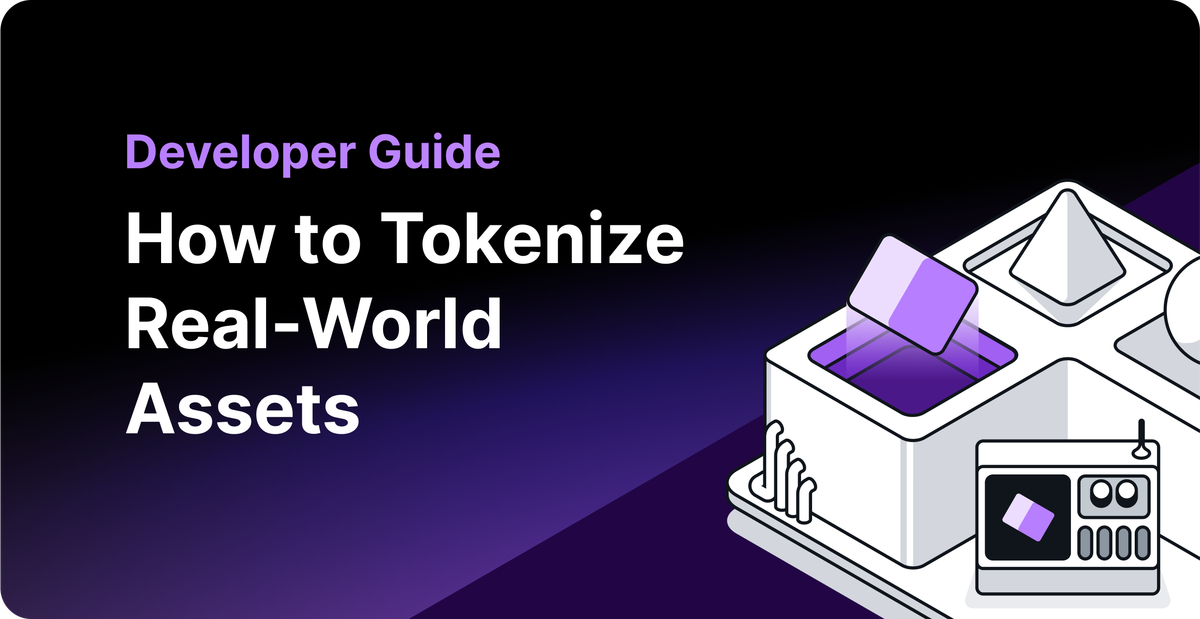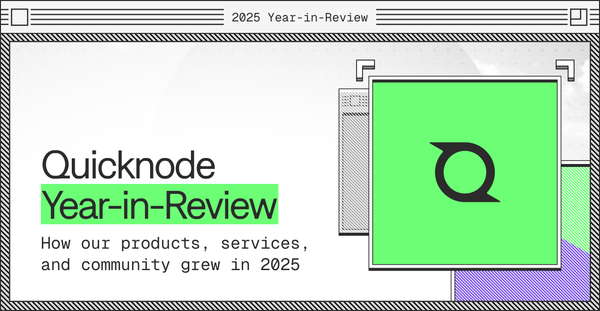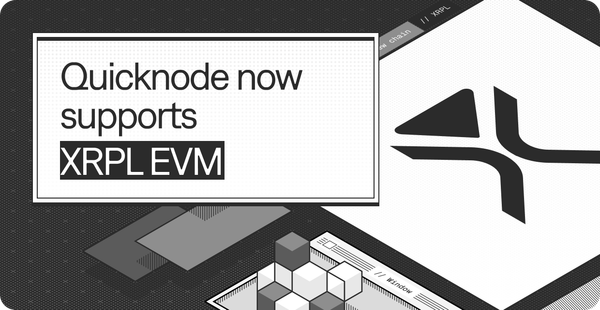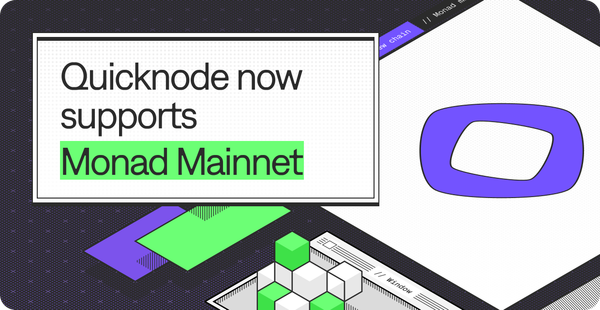How to Tokenize Real-World Assets: A Developer’s Guide to Onchain Asset Infrastructure
A quick guide to RWA tokenization: token standards, oracle design, compliance layers, and the future of on-chain asset tokenization.

Real-world assets (RWAs) are quickly becoming one of the biggest growth areas in crypto bringing trillions of dollars in traditional finance onto public blockchains. Over $24 billion in real-world assets have already been tokenized, with 85% year-over-year growth driven by private credit, Treasury funds, and institutional adoption.
Major financial institutions are tokenizing assets to solve problems legacy systems can't: instant settlement, programmable ownership, and 24/7 global liquidity.
For developers and builders in the web3 space, this creates a massive infrastructure opportunity: trillions in traditionally off-chain value are moving to blockchain rails.
In this guide, we’ll break down what RWAs actually are, why they’re gaining momentum now, and how on-chain infrastructure makes them work.
What Are Real-World Assets? (And Why They're Big Now)
Real-world assets (RWAs) are traditional financial assets represented on blockchain through tokenization, the process of creating digital tokens that represent legal and economic ownership of off-chain assets.
These can include:
- Financial assets: Treasury bills, bonds, private credit
- Physical assets: Real estate, commodities like gold, equipment
- Alternative assets: Private equity, collectibles, art
- Institutional products: Money market funds, tokenized debt instruments
Once tokenized, these assets can be transferred and traded on blockchains, offering benefits like instant settlement, fractional ownership, and programmatic control.
Why Now?
The RWA space is hitting escape velocity for three core reasons:
Institutional Validation
Major institutions are moving assets onchain because the infrastructure solves real operational problems.
- BlackRock’s BUIDL fund tokenized on Ethereum
- Franklin Templeton, UBS, and J.P. Morgan issuing tokenized bonds and funds
These moves by the big names signal systematic adoption.
Scalable and Reliable Infrastructure
Smart contract platforms can now handle institutional-grade complexity — multi-signature custody, real-time oracle feeds, automated compliance checks, and instant settlement.
Protocols like Centrifuge and Maple are processing billions in loans onchain while maintaining traditional legal protections.
Regulatory Clarity
One of the key enablers of RWA momentum is the steady shift in regulatory posture. Over the past year, governments and financial regulators have shown a growing interest in tokenization as a meaningful infrastructure upgrade for capital markets.
- The U.S. Treasury Department has explored how blockchain-based settlement could improve efficiency and transparency in the government bond market.
- In Europe, the EU’s DLT Pilot Regime is creating a controlled framework for institutions to experiment with tokenized securities.
- Countries like Singapore and Hong Kong have launched structured initiatives to bring regulated asset tokenization to life.
The result of all these efforts: over $24 billion in RWAs have been tokenized as of mid-2025, with private credit (~61%), Treasuries (~30%), and gold (~7%) leading.
But why does any of these matter?
Why On-Chain Infrastructure Matters
Traditional finance runs on infrastructure built decades ago: batch processing systems, siloed databases, and manual reconciliation processes that take days to settle trades. Onchain infrastructure replaces this with programmable, always-on systems that solve fundamental problems in asset management and trading.
Blockchains and smart contracts allow assets to be issued, transferred, and managed in ways that legacy systems simply can’t replicate.
Here’s why that matters:
Instant, Atomic Settlement
Traditional asset transfers require multiple intermediaries and take 1-3 business days to settle. Onchain settlement happens in seconds with atomicity: either the entire transaction completes or none of it does. This reduces counterparty risk, unlocks capital faster, and removes reconciliation overhead.
Programmable Asset Logic
RWAs on-chain can be governed by smart contracts. That means transfers, access controls, collateral thresholds, and payout rules can all be automated and enforced by code — no need for manual approval flows or trust in a centralized party.
- A tokenized bond can trigger margin calls when collateral values drop below thresholds.
- Private credit protocols can automatically distribute payments to lenders based on loan performance.
This reduces operational overhead while increasing reliability. No manual processes, no human error, no delays.
Real-Time Auditability
Every transaction and asset movement on-chain is visible and verifiable in real-time. Regulators can monitor compliance continuously rather than through periodic audits. Investors, issuers, and regulators can all verify what’s happening, when, and to whom.
This transparency reduces fraud risk and eliminates dependence on opaque intermediaries.
Composability
Tokenized assets become building blocks for new financial products and they are modular by design. Developers can create structured products that automatically rebalance based on market conditions, use tokenized Treasuries as DeFi collateral, or build cross-border payment systems using tokenized deposits.
This is financial infrastructure with an open API layer.
Global Access and Liquidity
On-chain assets don’t sleep. Assets can trade globally 24/7 without geographic restrictions or banking hours. This democratizes access to private markets that were previously restricted to local or institutional players while creating deeper liquidity pools.
These benefits aren’t just present in theory. They are being realized today:
- Maple Finance and Centrifuge have originated billions in private credit directly on-chain.
- Tokenized money market funds now offer 24/7 liquidity on top of the U.S. Treasuries.
- Ondo Finance lets DAOs and treasuries hold tokenized short-term bonds as yield-bearing assets.
The result: A new era where every asset becomes programmable, interoperable, and composable and now, let’s talk about how to architect this era.
The Core Building Blocks of RWA Tokenization
Tokenizing real-world assets is a full-stack infrastructure challenge that can be overwhelming.
Developers building RWA applications need to think beyond the token itself. Why?
Because RWA tokenization is not just about issuing an asset, it is about embedding trust, provenance, enforceability, economics, and utility into code.
Here are the 3 foundational layers needed for RWA tokenization:
Smart Contracts
RWA smart contracts enforce compliance rules, manage custody relationships, automate complex asset behaviors, and more.
These contracts often include:
- Minting and burning logic tied to off-chain asset issuance/redemption
- Permissioned transfers that enforce KYC/AML requirements
- Compliance modules that restrict trading based on whitelisted wallets or jurisdictions
- Automated payouts and cash flows, such as interest or dividend distributions
- Emergency controls for regulatory compliance or asset recovery
Protocols like Centrifuge use multi-tier smart contract systems where asset pools, tranches, and governance are managed by separate contracts.
Oracles
Tokenized assets rely on external information: valuations, interest rates, NAVs, payment status, and more. Oracles bring this off-chain data into smart contracts in a secure, verifiable way.
Depending on the asset, oracles can provide:
- Price feeds for collateralization or NAV tracking
- Settlement confirmations (e.g. a loan has been repaid off-chain)
- Custody proofs, attesting that an off-chain asset is held in reserve
- Performance metrics for underlying assets like loan payments or rental income
Compliance Frameworks
RWAs have legal claims tied to real-world entities. The on-chain token is only as enforceable as the legal wrapper behind it.
That means developers need to build with legal infrastructure in mind, including:
- Special Purpose Vehicles (SPVs) that hold legal title to underlying assets
- Custody arrangements that separate asset ownership from operational control
- Compliance infrastructure to meet KYC/AML, securities, and tax obligations
- Dispute resolution mechanisms that bridge traditional legal systems with onchain governance
Many RWA platforms today work with custodians, transfer agents, and legal firms to bridge this gap.
Together, these three layers — code, data, and law — form the core infrastructure stack for RWA tokenization.
Outside this, the choice of blockchain selection, the token standards, metadata storage, data query and indexing solution, and more are to be taken into account.
Developer Considerations When Building with RWAs
RWA tokenization is a fairly new primitive in the space of blockchain development. And with 10000 moving parts that a developer has to take care of and coordinate, there are some considerations that need to be prioritized. Figuring these out eases out the development process:
Which oracle setup handles RWA complexity?
RWAs need multiple oracle types: asset valuation, compliance status, and performance metrics. Choose providers with institutional relationships and build fallback mechanisms for critical data feeds.
What token standard fits compliance requirements?
Standard ERC-20 doesn't handle transfer restrictions or regulatory compliance. Consider ERC-1400 for full security token features or ERC-1404 for simpler restricted transfers with error messaging.
Which chain balances stability with costs?
Enterprise RWA protocols prioritize stability and performance over maximum decentralization. Ethereum offers institutional adoption but higher costs. Layer 2s like Polygon and Arbitrum provide scaling while maintaining security. Appchains and RWA-specific chains like Lumia can also be considered.
How should metadata and documents be stored?
RWA protocols generate extensive documentation requiring secure, compliant storage. Use hybrid approaches:
- Store document hashes onchain (IPFS, Arweave) with files in compliant storage systems.
- Employ indexing systems like QuickNode Streams for complex reporting queries.
Should compliance be built in-house or outsourced?
Build compliance into protocol architecture from day one: investor verification, transfer restrictions, and regulatory reporting.
Consider compliance-as-a-service providers like Tokeny for complex regulatory requirements rather than building everything internally.
What’s Next: Get Hands-On with RWAs
The RWA wave is accelerating, but the infrastructure layer remains wide open. Developers who build the rails — compliant token standards, institutional-grade oracles, and seamless custody solutions — will capture outsized value as trillions migrate onchain.
Solving real institutional pain points: settlement delays, compliance overhead, and liquidity constraints are gonna be a huge win for the entire RWA space.
Frequently Asked Questions (FAQs)
- Can tokenized RWAs integrate with DeFi protocols?
Yes, composability is a key feature. RWAs can be used as collateral, yield instruments, or building blocks in structured financial products.
- How do developers handle compliance when building RWAs?
Compliance can be coded into smart contracts via whitelisting, transfer restrictions, and KYC checks. Some teams use third-party compliance providers for scale.
- What's the biggest technical challenge in RWA development?
Bridging off-chain compliance and legal requirements with onchain functionalities and putting them all together inside a smart contract code remains a key challenge for developers.
About QuickNode
QuickNode provides the tools and resources builders need to create incredible products. With a globally balanced infrastructure, guaranteed reliability, a user-friendly interface, and end-to-end customer support, QuickNode allows enterprises to realize their ideas on the chain rapidly.





